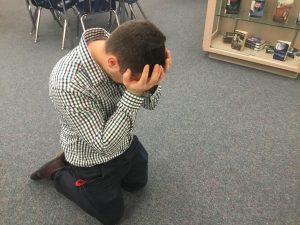The goal of this project is to Identify the 8 plot points (by using quotes) of “Father and Son”, by Bernard MacLaverty. Under each plot point I also have to write 3-4 sentences explaining the quote. The story is about a father and son who reside in Ireland. They are involved in a conflict. The Son is associating himself with dangerous people. The father is trying to find out what’s going on to stop his son from getting hurt.
1) Exposition
: “I do not sleep. My father does not sleep… My son is breaking my heart. It is already broken. Is it my fault there is no woman in this house? Is it my fault a good woman should die?” (MacLaverty 16)

Explanation: This is the Exposition because we are further introduced to the characters. We find out that the mother has died. We also find out that their is some kind conflict between the Son and father, as the father mentions that his son is breaking his heart.
2) Rising Action
: “My son, he looks confused. I want you to talk to me the way I hear you talk to people at the door… I pulled you away from death once and now you will not talk to me. I want to know if you are in danger again” (MacLaverty 166)

Explanation: In this rising action we are further introduced to the conflict. We find out the details of conflict; such as the fact that the son had escaped death once, and he may be in serious danger again. We also see that the son and father don’t have a very close relationship. This all builds up the plot to the climax.
3) Rising Action
: “Son you are living on borrowed time. Your hand shook when you got home. I have given you the life you now have… Let me put my arm around your shoulders and let me listen to what is making you thin. At the weekend I will talk to him” (MacLaverty 167)

Explanation: This is a rising action. It builds up the plot and conflict by showing the reader that the father wants to help his son and find out what’s going on, but he keeps procrastinating and putting it off for later.
4) Rising Action
: “For two years, I never heard a scrape from you. I read of London in the papers. Watched scenes from London on the news, looking over the reporter’s shoulder at people walking in the street… Then a doctor phoned for me at work… ‘I had to go and collect you. Like a dog’” (MacLaverty 167-168)

Explanation: This is a rising action because it shows the reader that the Son has been in trouble before, and it’s very likely that he once again could be in serious danger. From this the reader can see that the Son doesn’t care for his father, while the father is very concerned for his son. This builds up the path to the climax.
5) Rising Action
: “The door swings open and he pushes a hand-gun beneath the pillow… ‘What’s that? Under your pillow?’” (MacLaverty 169)

Explanation: This is a rising action because it reveals that the Son owns a handgun. This builds up the conflict between the son and father. This also hints to the reader that the Son is most likely involved with dangerous people, and foreshadows what may happen next.
6) Climax
Quote: “There is a bang. A dish-cloth drops from my hand and I run to the kitchen door” (MacLaverty 169)

Explanation: This is the climax, because the whole story leads up to this moment. The story has been foreshadowing that the son is in danger, and how his father keeps trying to warn him. Here the reader sees that the conflict concludes in the Son getting shot.
7) Falling Action
Quote: “I take my son’s limp head in my hands and see a hole in his nose that should not be there” (MacLaverty 169)

Explanation: This is the Falling Action. The plot begins to wrap up; it confirms that the Son did get shot and is dying.
8) Denouement
Quote: “My son, let me put my arms around you” (MacLaverty 169)

Explanation: This is the Denouement, because this happens right after the climax and offers the reader the last pieces of information. It is an expository sad ending. All loose ends are tied up; the reader finds out that the Son does die, which the story has been foreshadowing. The father finally gets to hug his son.
x
=
x
=
=








